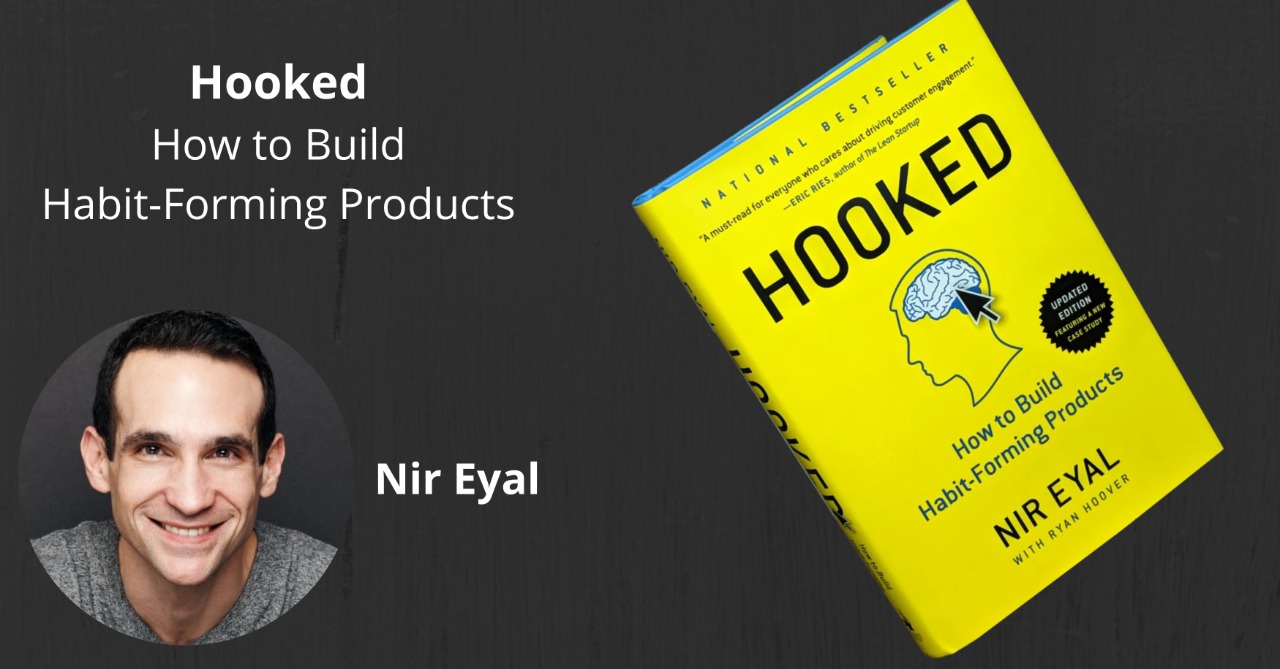Hooked by Nir Eyal: A Guide to Creating Habit-Forming Products
How to create Habit-forming products?
Nir Eyal’s book Hooked is a very useful tool for marketers. It gives an insight into the science of habit-forming products.
Nir Eyal, in his book Hooked, talks about how to create habits that people want to stick to. The author gives insights on how to create products that make users do things they wouldn’t normally do. He also explains how you can use psychological triggers (i.e., rewards) to form habits in your customers.
A lot of examples are talked about throughout the book. Here are some of my learnings.
QWERTY Keyboard (Habit)
QWERTY keyboard was first developed in the 1870s. It was designed in such a way that commonly typed characters were spaced apart which prevented the metal-type parts of early machines from jamming. This has created a Habit, and we are still not able to break it.

Vitamins Vs. Pain Killers
Nir Eyal talks about two kinds of products (Vitamins Vs. Pain Killers)
According to Nir,
Painkillers solve an obvious need, relieving a specific pain and often have quantifiable markets. Vitamins, by contrast, do not solve an obvious pain point. Instead they appeal to the user’s emotional rather than functional needs.
Facebook, Twitter, and LinkedIn are good examples of vitamins, and later they have transitioned to a Painkiller.
Trigger, Action, Variable Reward, and Investments are the four steps of the Hooked Model.
Trigger: What is causing the user to use the product in the first place. Some examples of Triggers include Paid and Referral (Relationship) Triggers. It could be a paid trigger (ads) – Referrals (Where someone you know uses the product, had a great experience, and refers you to use the product.
Action: Action is the next step of the Hooked Model. What causes people to use your product? The scarcity effect could be a reason for people to take action (Only 5 left in stock). (I am not a big fan of this) as it is often deceiving. Motivation could be a reason that push people to act (as they may be nearing a goal).
Rewards: Rewards are a great reason to keep people returning to the product. Facebook (to see how many people liked your post), Twitter (how many retweets), and Stack Overflow (People spend countless hours solving other people’s technology problems & questions for free to receive recognition) are great examples of rewards. Rewards of the Hunt have existed long before the advent of computers. In the early days, we hunted for food, and now we hunt for other things. Rewards must fit into the narrative of the product.
Nir’s quote, Points, Badges & Leaderboards can prove to be effective, but only if they scratch the user’s itch. When there is a mismatch between the customer’s problem and the company’s assumed solution, no amount of gamification will help spur engagement.
Nir offers the following recommendations:
- Talk to 5 of your customers to see what they enjoy the most about your product.
- Review the steps these 5 customers do to use your product habitually
- Brainstorm three ways your product can create rewards for users
Investment: People need to invest their time in the product. A good example of this is Salesforce, where people invest their time in uploading sales data so the system can better equip them to navigate through the sales process. QA Touch is also another example of this where Quality Analysts import or upload test cases into the product.
The Morality of Manipulation
Towards the end of the book, the author also talks about the morality of manipulation. Do teenagers need to be on Snapchat all the time? It is addictive. However, it could also be harmful (like smoking?
Here Nir also talks about being a Facilitator, Peddler, Entertainer & Dealer
- Facilitators, where we not only facilitate the improvement of other users’ lives but we also improve our own life by using the product.
- Peddlers, where the creators have a strong motivation to improve the user’s lives; however, creators would not use the product.
- Entertainer, where products are created just to have fun.
- Dealer, where a designer does not believe in the product and would not use it. He also does not believe it will improve users lives – This is exploitation.
What next?
Identify the devoted users of your product, Interview them. Find a habit path (series of similar actions shared by your most loyal users) to codify it. Observe the pattern, iterate and Modify It. Interface changes can do a whole lot of good.
Hooked is a book that talks about how to make products that people want to use. The book covers the fundamentals of human behavior and how we respond to incentives. It also provides tips to create the right kind of products for your customers, based on what they actually want.
Hooked is a good-read for anyone who wants to understand how their products work, and why they work so well. Through his book, Nir elucidates one great thought, It’s not just about having an idea for one. It’s about how to make your idea a habit and how to make sure it works for everyone else too.
Thank you Nir.




Leave a Reply